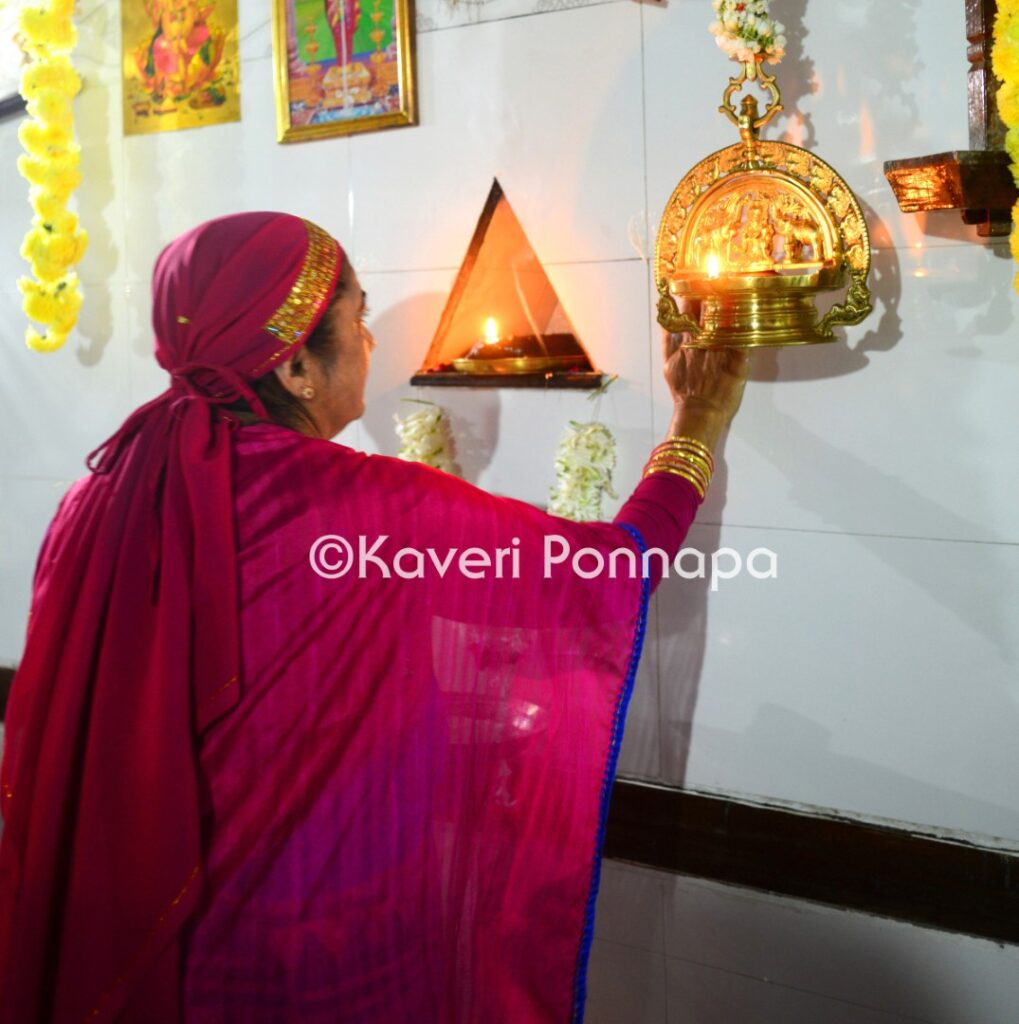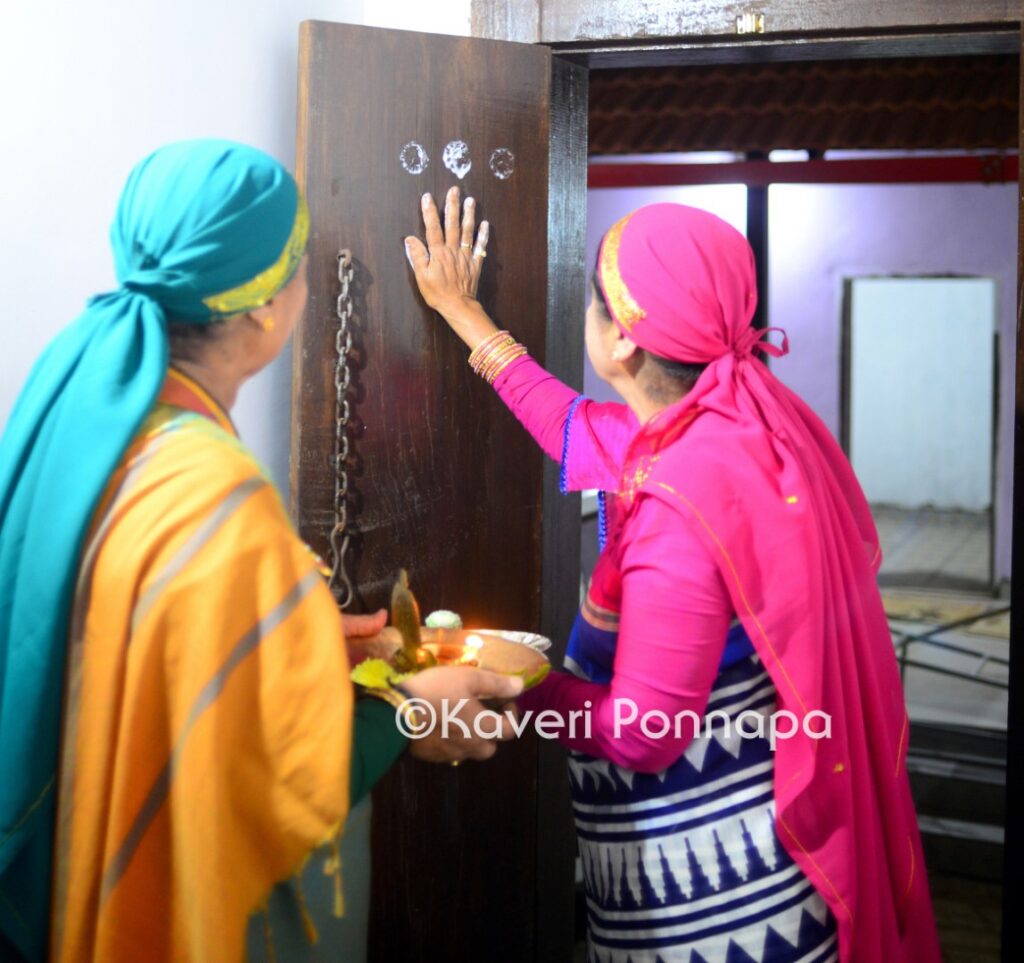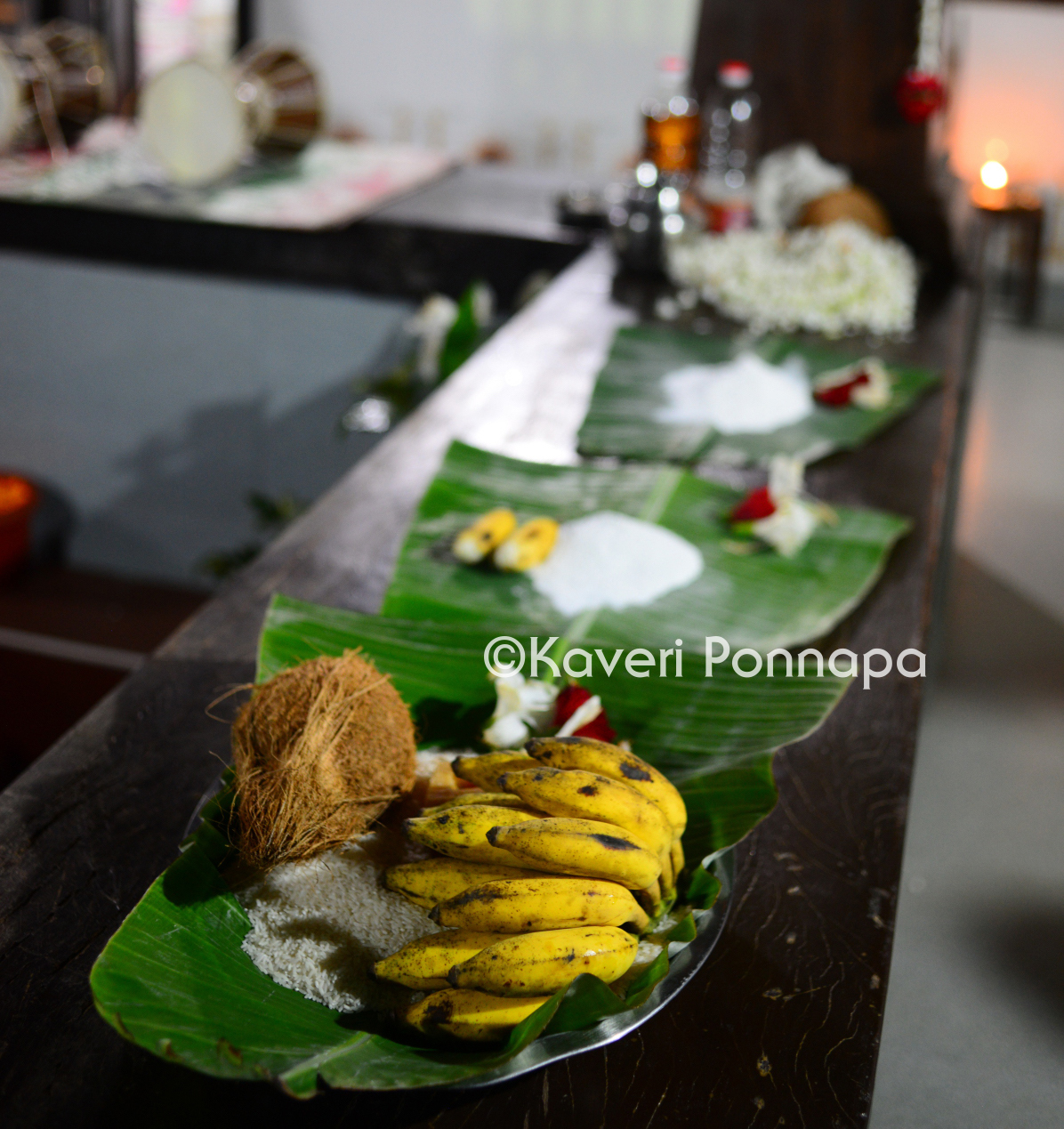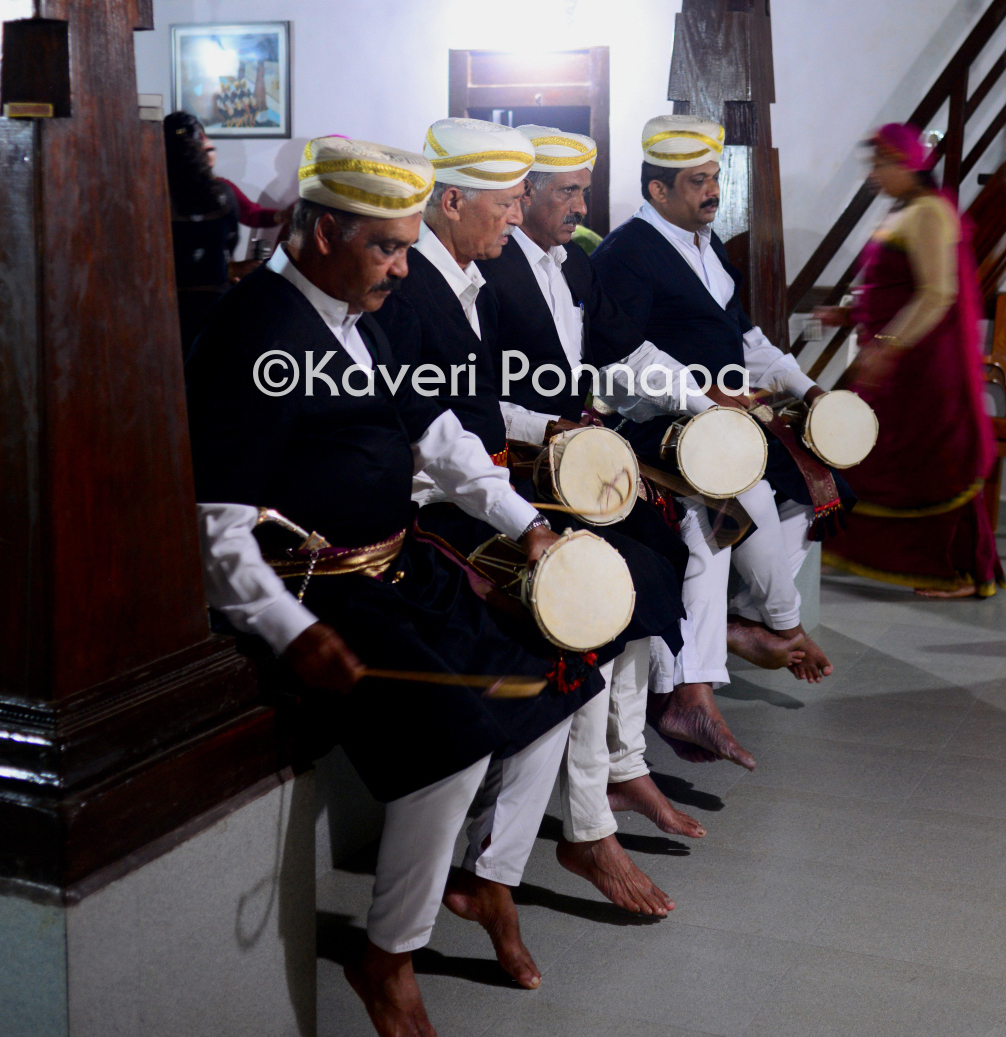
Puthari, Kodagu’s annual harvest festival, the most important celebration across Kodagu, takes place at the end of the year on a full moon night in late November or early December. As the name indicates—pud (new) ari (rice)—it welcomes the new rice crop, which has been ripening in the fields since September. In oral histories, the practice of rice cultivation is believed to have spread to Kodagu from Kerala, bringing with it several new deities and customs that were established in Kodagu over the centuries. The date for the ceremonial harvesting of the first sheaves of paddy is declared from the Padi Sri Igguthappa temple, a deity which has its origins in Kerala.

The announcement marks the commencement of preparations for the festival. Okkas (patrilineal descent groups) inform family members, who gather at their respective ain manes (ancestral homes) including those who live outside Kodagu, especially if they happen to be office bearers or have specific ritual and ceremonial roles to paly in the celebrations. Plans are laid down for the weeks that follow: the ain mane is cleaned, painted and prepared; the village mand (outdoor community space) is cleared in preparation for dances. The responsibility of bearing the puthari kuthi (a hollow cylindrical wooden cask) which holds the scared, freshly harvested sheaves of grain is assigned, usually to the koravakara (senior most member and head of the family). In his absence, it is assigned to the next in seniority, or a family member chosen by consensus.

On puthari night, special leaves and creepers are collected to tie together into nere (small cones that will hold sheaves of harvested grain). In the kitchen, the koravakarthi (senior woman of the family) spreads a palambe (woven palm leaf mat) on which she places a palya (four-legged wooden stool). A puthari kudike (harvest basket) heaped with rice and rice flour, with a paani (grain measure made of wood, brass or copper) filled with one maana (half a seer) of rice placed atop rests on the stool.

Two taliyatakkibolchas (bell metal platter heaped with rice on which a lit lamp is placed) and a kathi (knife) and kotthi (harvesting sickle) are placed one the mat. The puthari kuthi is filled with one maana rice.Two plantain leaves on which a measure each of raw rice, rice flour, two bananas, coconut, jaggery and flowers are placed on the aimara (sacred wooden seat) where the dudipatkaras (singers) are seated. The koravakarthi makes a paste of rice flour and water, and uses a cross-section of a bitter gourd to stamp out auspicious patterns all the doors as well as the wall around the scared lamp, starting in the nellakkinadubade (central hall), to welcome the prosperity that will come from the fields. The women of the okka prepare koot curry (a curry of mixed vegetables), vegetable pulav, mor pajji (cucumber in yogurt) and inji pajji (ginger and coconut chutney). When these preparations are complete, Ajjappa tere, the spirit of the founding ancestor descends on a chosen okka member who acts as an oracle for the ancestor’s spirit, and blesses the gathering. The dudipatkaras sing the puthari pat, and also the desha kett pat (describing the creation of the ancient administrative divisions of Kodagu).
The living puthari traditions described above were documented on 7th December, 2022 at the Kundyolanda ain mane.

